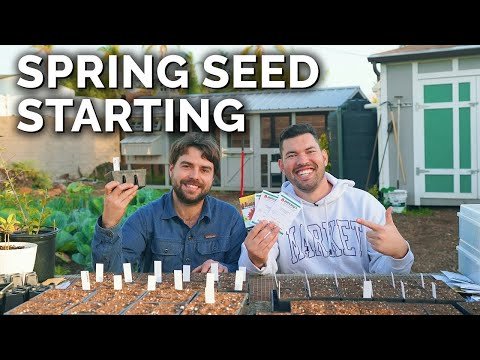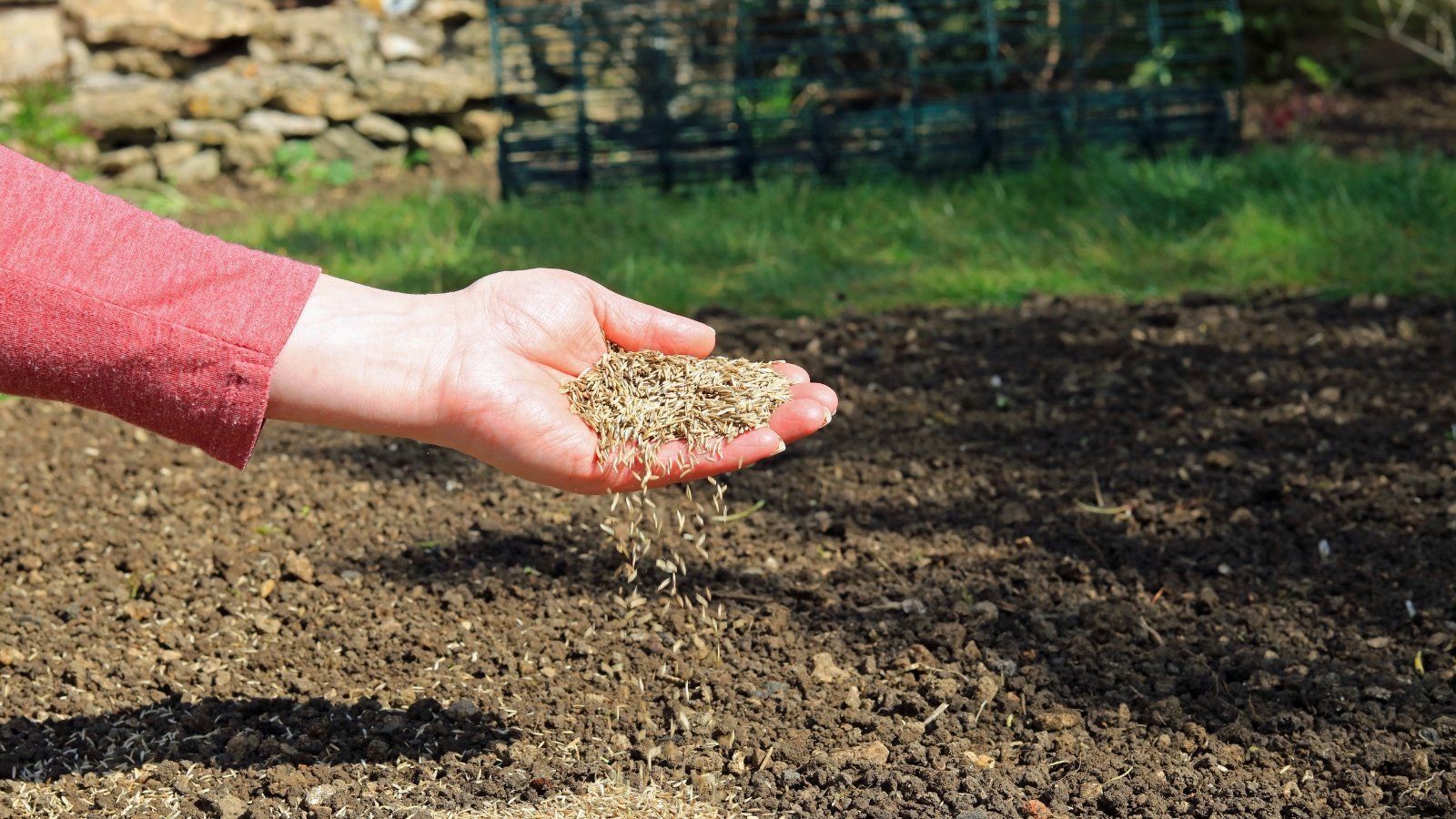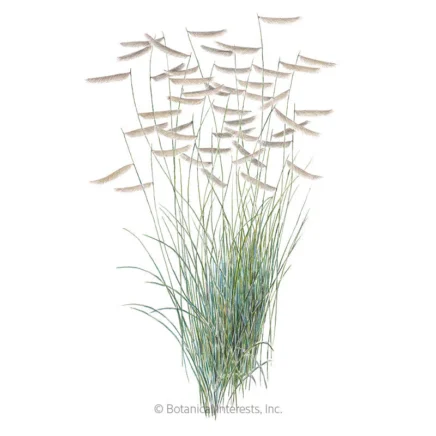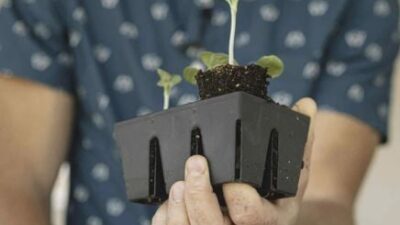Sowing seeds successfully is an essential skill for all gardeners to have. It expands the available plant varieties you can grow, allows you to control environmental conditions meticulously, and saves money too.
Unfortunately, even though sowing seeds is not a difficult process, there are many ways we can go wrong. From watering at the wrong time to providing the wrong environmental conditions, several stumbling blocks can cause weak growth or, worse, no germination at all.
To secure seed-sowing success this season, follow these 15 tips for sowing indoors and out.
Plant What You Can Manage

It’s easy to get carried away when purchasing seeds. The options seem almost endless, especially when shopping online. A lower price point compared to buying plants from a nursery makes it easy to justify buying more than you really need.
I’ve made this mistake many times. In fact, I’ve often purchased more than one seed packet of the same thing, just to make sure I have enough. Spoiler alert – one packet is usually more than enough for most home gardens, depending on what you’re planting.
Buying masses of seeds and trying to plant them all at once is bound to set you up for failure. Seed starting is not difficult, but it does require attention to ensure your seedlings germinate well and are strong enough for planting. Sowing more seeds than you have the time (or patience) to care for is going to result in many sad seedlings instead of a few strong and healthy ones.
I won’t say ‘start small’ necessarily, particularly for those experienced in seed-sowing. But I will recommend planting only what you can manage at one time to limit the waste of resources and your time.
Label Everything
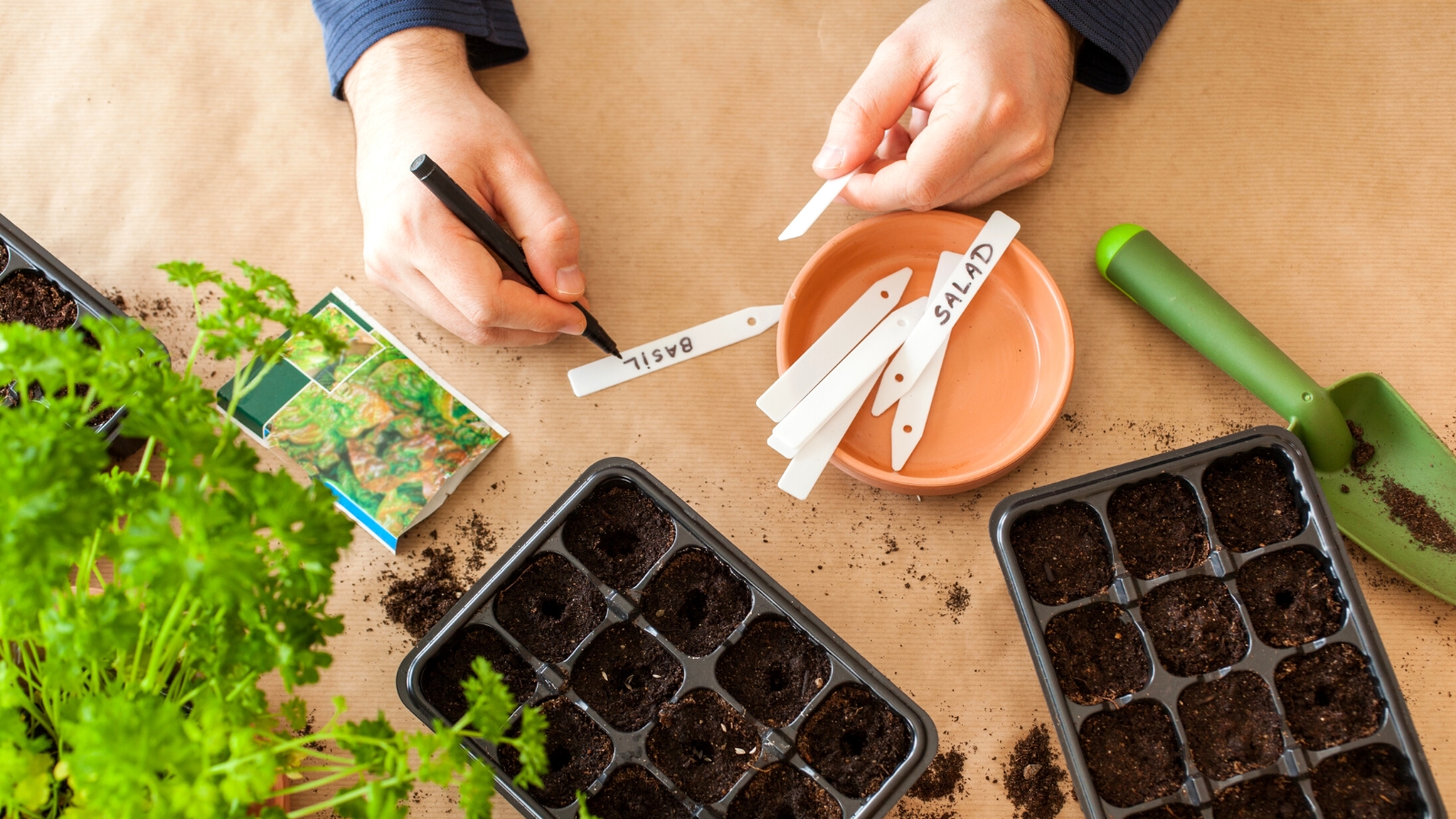
Have you ever excitedly sown your newly bought seeds into a couple of trays, watered them, and then completely forgot what you planted and where? I think many gardeners can relate to the panic of trying to figure out which plants are which the second any sign of green growth emerges.
Forgetting is not the end of the world, as you can often decipher your plants once they develop true leaves. However, it does make initial care a little tricky. For example, some seeds may take much longer than others to germinate. You may assume one batch of seeds just didn’t grow when a little patience is all you need to get them to spring up.
The solution? Label everything. Always have a set of plant labels in hand, ready to stick in the soil with the variety of the plant and the date of sowing. If you don’t have any labels nearby, I like to tear off the name of the seed on the packet (as long as there aren’t any seeds left) and pop that into the soil to remember what was planted where.
Take Notes
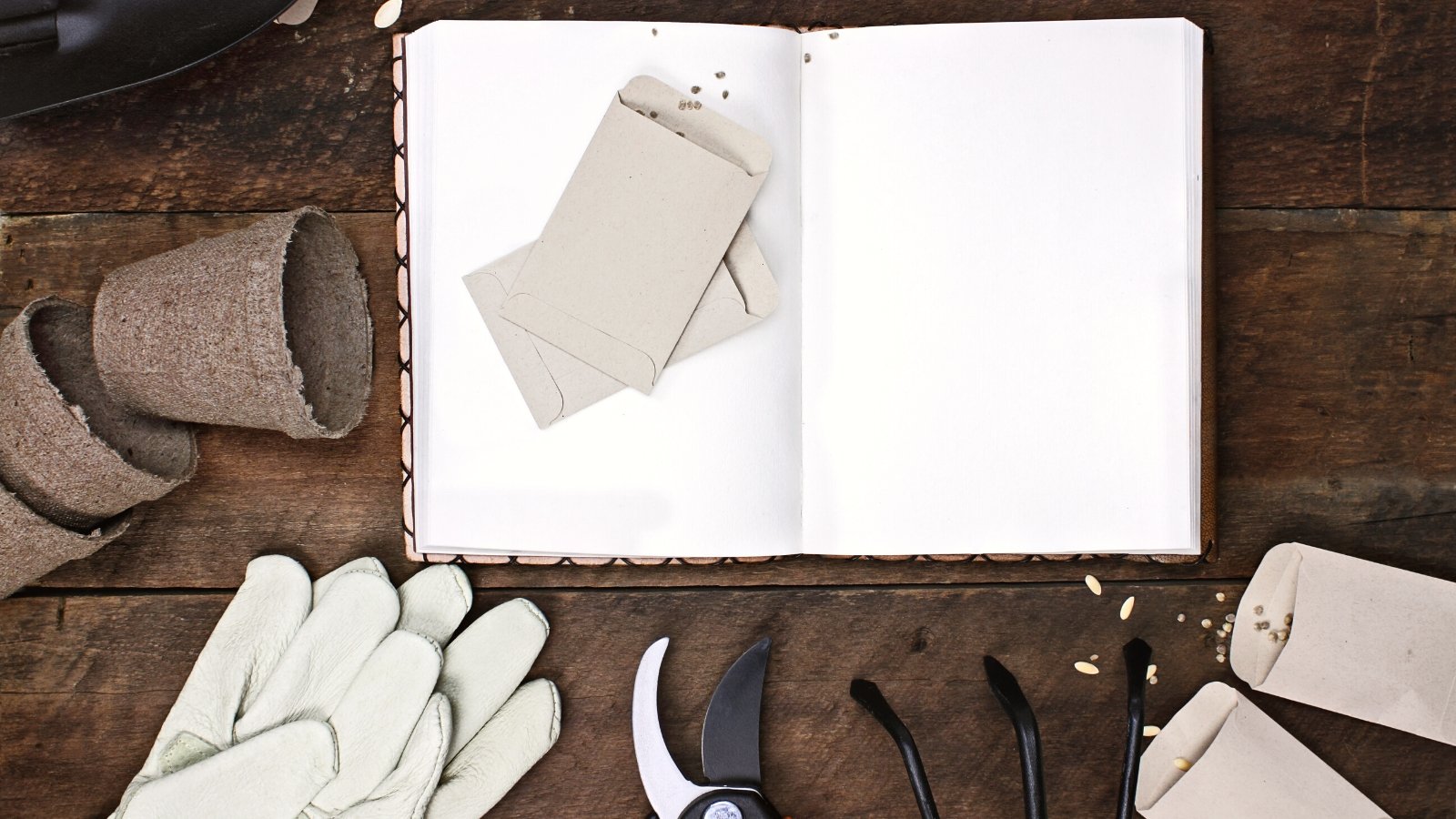
The next tip is similar to labeling but goes a little deeper. You can absolutely sow seeds each year as you wish without recording what you’ve done in the garden and how the plants perform, but you’ll be missing out on valuable data that you can use to improve your garden season after season.
If you don’t already have a garden journal, that’s the first place to start. Then, when you’re ready to sow, take note of helpful information that can help you later on:
- Plant Variety: Helps you track which varieties perform well in your garden and which you like.
- Date of Sowing: Tracks when seeds should be germinating and when they will be ready for harvesting, if relevant.
- Seed Company: Understand germination rates and performance from different suppliers.
- Location: Details on where you’re growing, including things like lighting and soil conditions, to possibly adjust the following season.
- Problems: Later in the season, take note of any problems you encounter, particularly with pests and diseases, to monitor recurring issues.
For those who aren’t data analysis enthusiasts, this may seem like a tedious process. But you’ll appreciate it in a few year’s time when you can’t remember the name of that variety that grew so well or where you encountered that nematode issue.
Get Your Timing Right
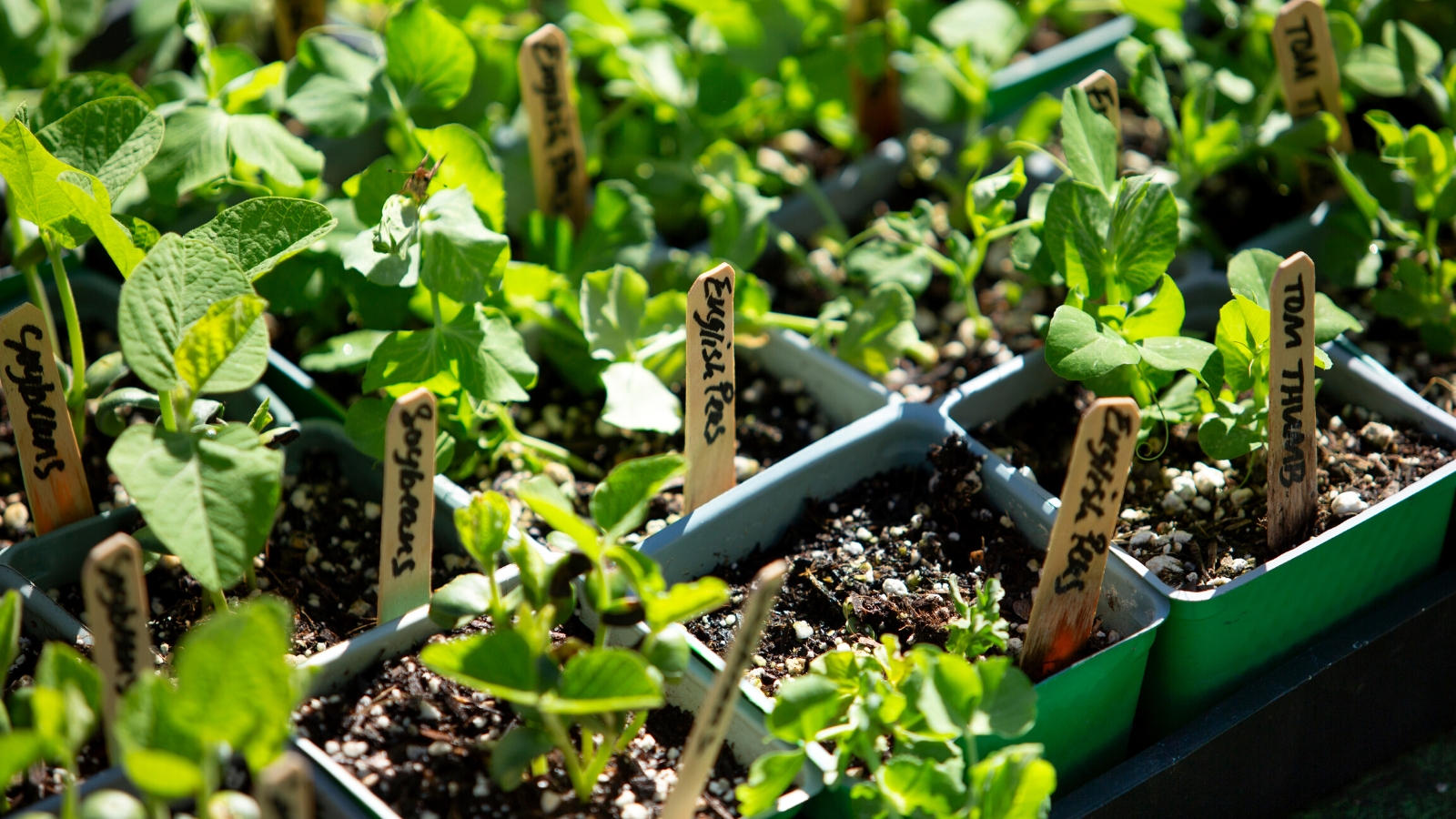
The instructions on seed packets are not just for show or fun suggestions that you can look over if they don’t suit you. These guidelines are designed to help you ensure your seeds germinate and grow successfully, particularly when it comes to planting time.
If you plant your seeds too early, you’ll struggle to get them to germinate and establish well after transplanting (unless you have very careful control over the planting environment). In other words, I’m not talking about starting seeds indoors where you’re recreating the right outdoor conditions for germination.
If you plant your seeds too late, you’ll shorten your season and probably confuse the plant. I made this mistake last year when planting watermelons far too late into the season. The vines grew well and developed plenty of leafy growth, but flowering was spotty and pollination almost non-existent. Plus, the fruits wouldn’t have had time to develop in the right conditions anyway.
And if you consider the extremes, obviously don’t plant spring-sowing plants in fall or fall-sowing plants in spring. That’s bound to lead to some confusing and spotty results.
Know Which Seeds To Soak
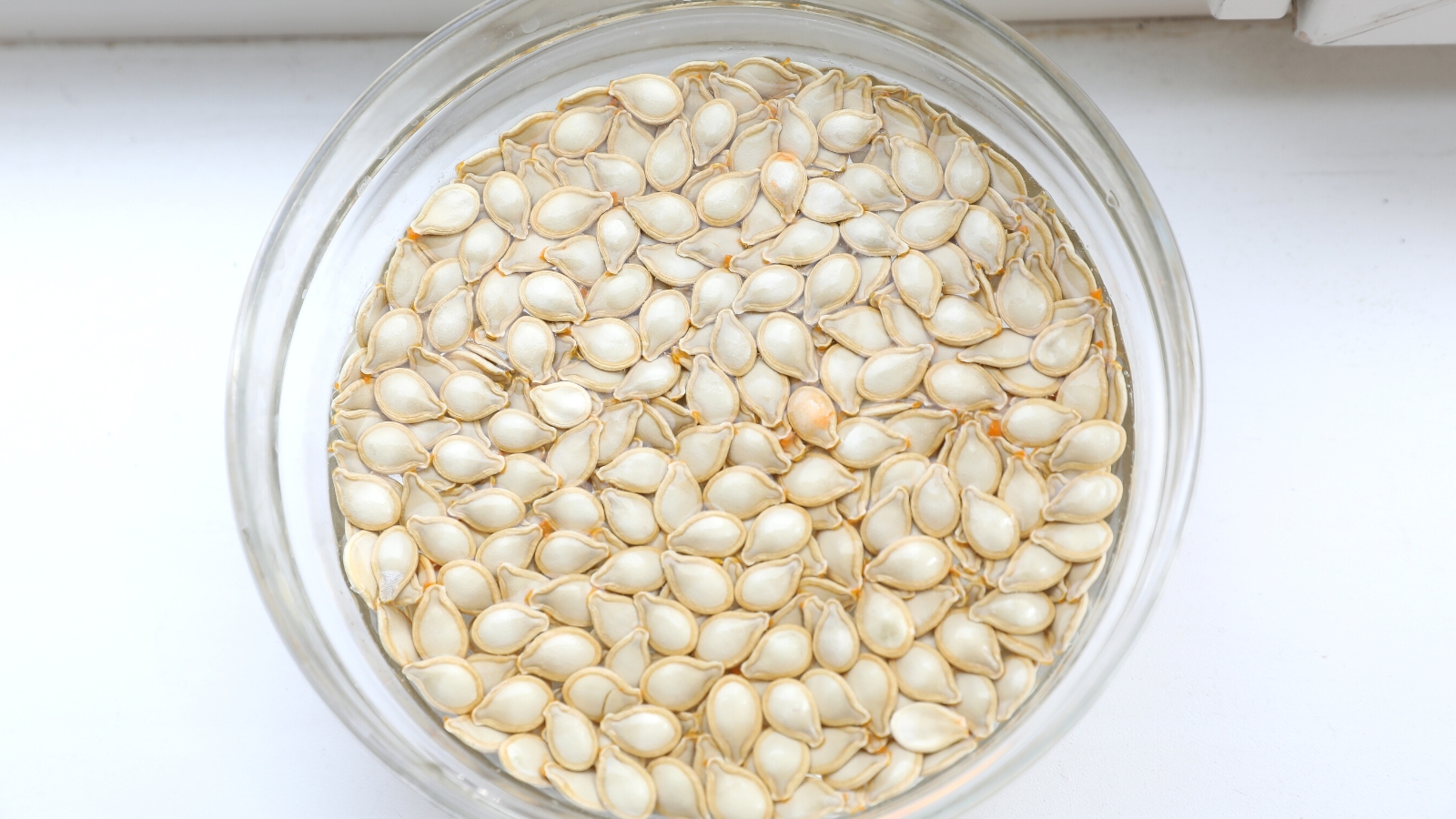
Some seeds may need a little extra germination help before you start planting. Smaller seeds generally don’t require any attention, but larger seeds with tough outer shells will germinate much quicker when pre-soaked before planting. Rather than expending energy trying to break through this tough layer, your seedling can get straight to growing.
Large seeds like beans and pumpkins are ideal for soaking before planting. Gently scar the outer shell before soaking to allow the moisture to penetrate the seed. Soaking overnight in lukewarm water is usually enough to provide a germination boost before planting in trays or directly in the ground.
If you’re not sure which plants benefit from soaking before planting, take a look at this list for some of the most common ones.
Make Your Own Seed Mix
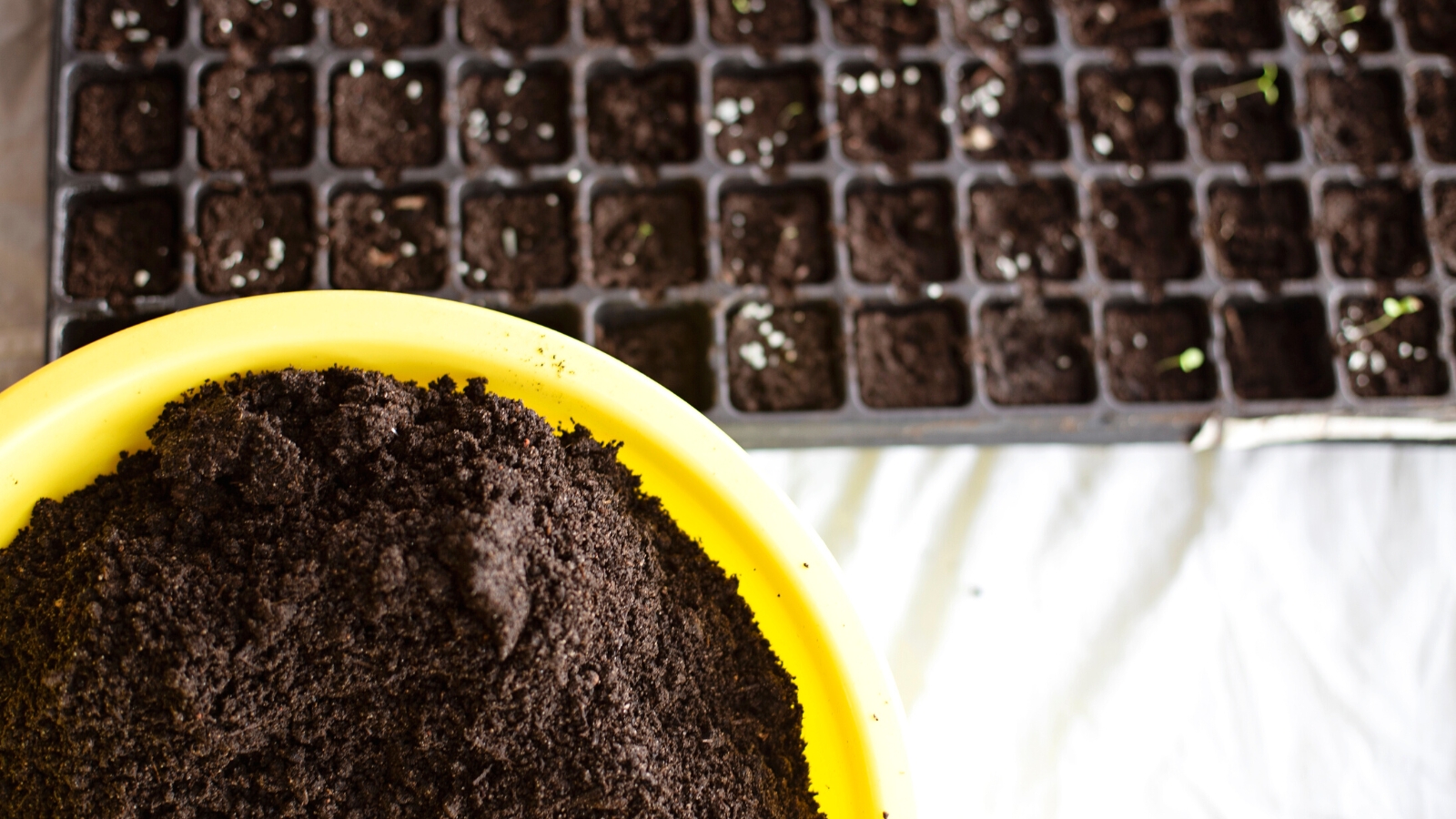
One of the common myths about seed starting is that you can only plant in a sterile, specialized seed-starting mix. In reality, seeds are tougher than you think. As long as your soil mix provides moisture, enough drainage to prevent rot and allow air to flow, and a few nutrients, your seeds will germinate.
If you don’t want to spend money on specialized seed starting mixes, it’s so easy to make your own. All you need is a high-quality potting mix and some small amendments, depending on what you’re growing. You may need to sift the potting mix to remove any large chunks that can hinder germination in the wrong spot.
After sifting, add some worm castings for extra nutrition or a small amount of perlite to improve drainage if you’re worried about moisture levels and soil density. Then, your mix is ready for planting.
Plant At The Correct Depth
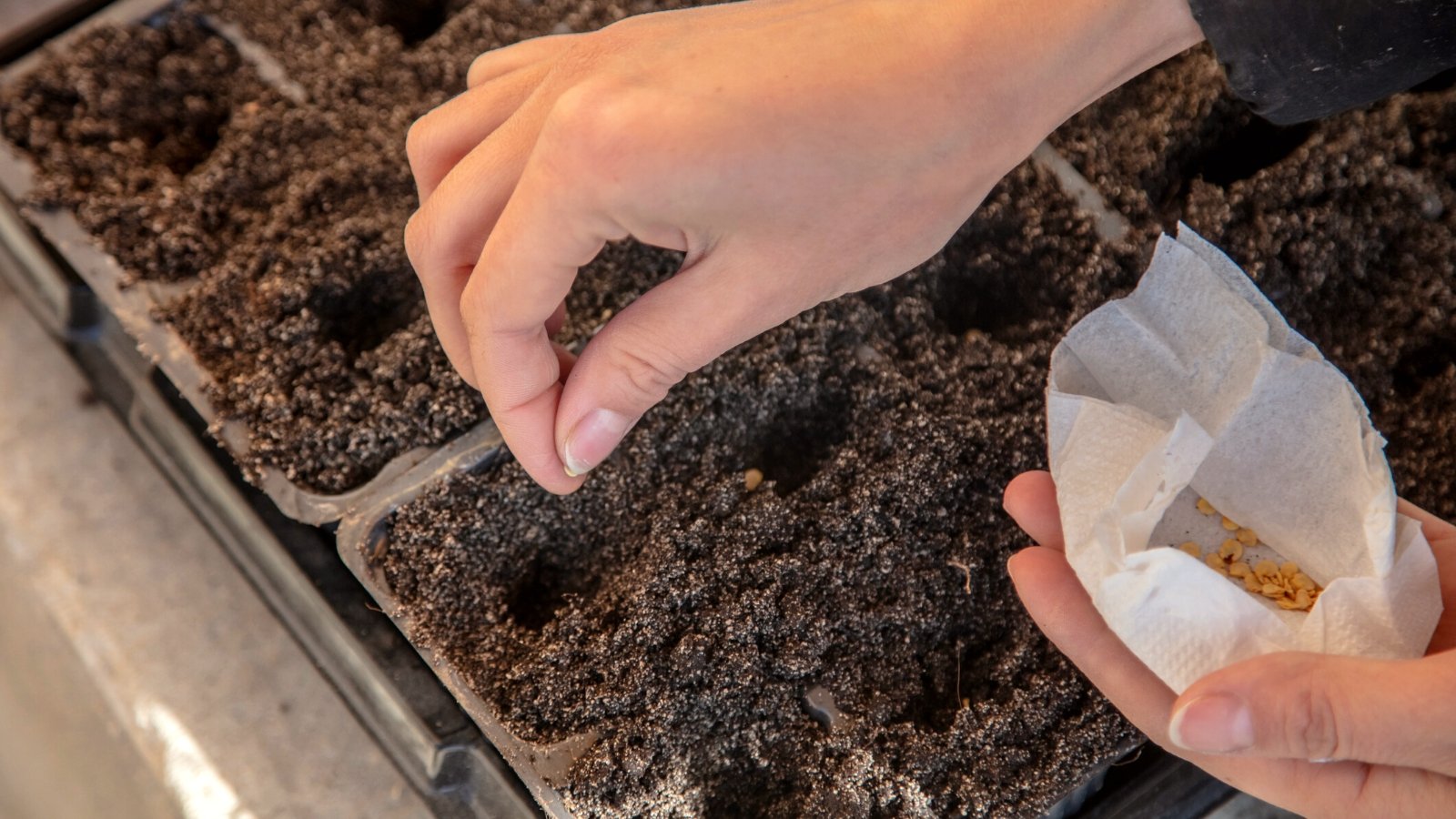
Another packet instruction to take careful note of is planting depth. Seeds have different preferences based on how they grow naturally and what environments they come from.
Some seeds prefer to be buried deeply for extra protection, while others need more light closer to the soil surface. Others don’t need to be covered at all, as long as they have good contact with the top soil layer.
If you plant at the wrong depth, your seeds will struggle to germinate. Smaller seeds buried too deeply won’t have the energy to push up above the soil line, while large seeds sown on top of the soil likely won’t have enough moisture contact to grow.
Follow the instructions for your specific plants closely to avoid any mistakes.
Use A Heating Mat
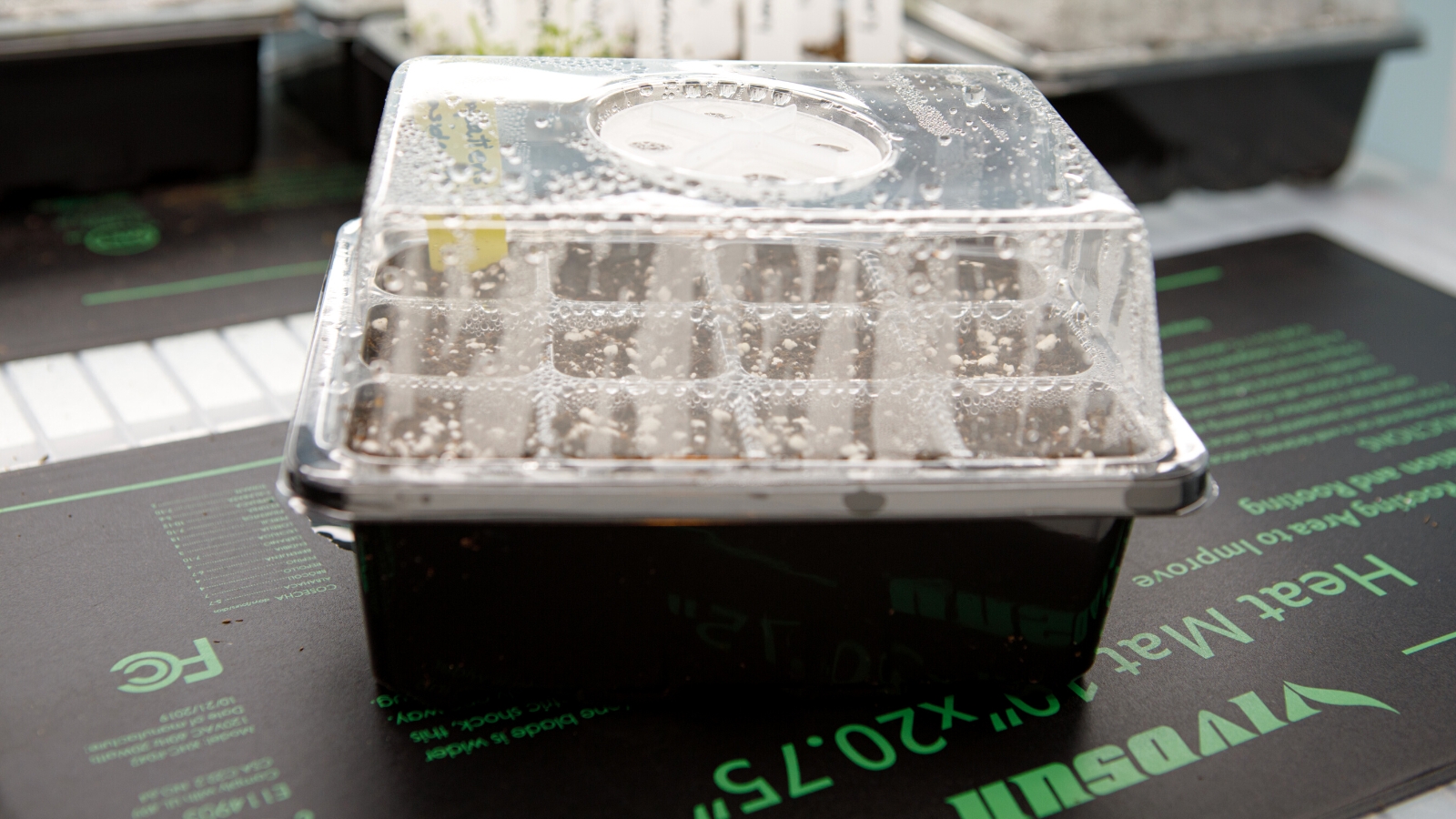
The next tip is optional, but goes a long way to boosting germination, particularly for those in cooler regions sowing early.
Many warm-season plants will only germinate when the soil reaches a certain temperature, indicating the coming of spring. If you live in one of the lower zones where warm spring seems to take ages to arrive, you can replicate the right soil conditions indoors with the help of a heating mat.
Heating mats gently warm the soil, creating the perfect conditions for germination. This leaves you with far less to worry about and improves germination rates by carefully controlling the environment.
Check The Soil Before You Water
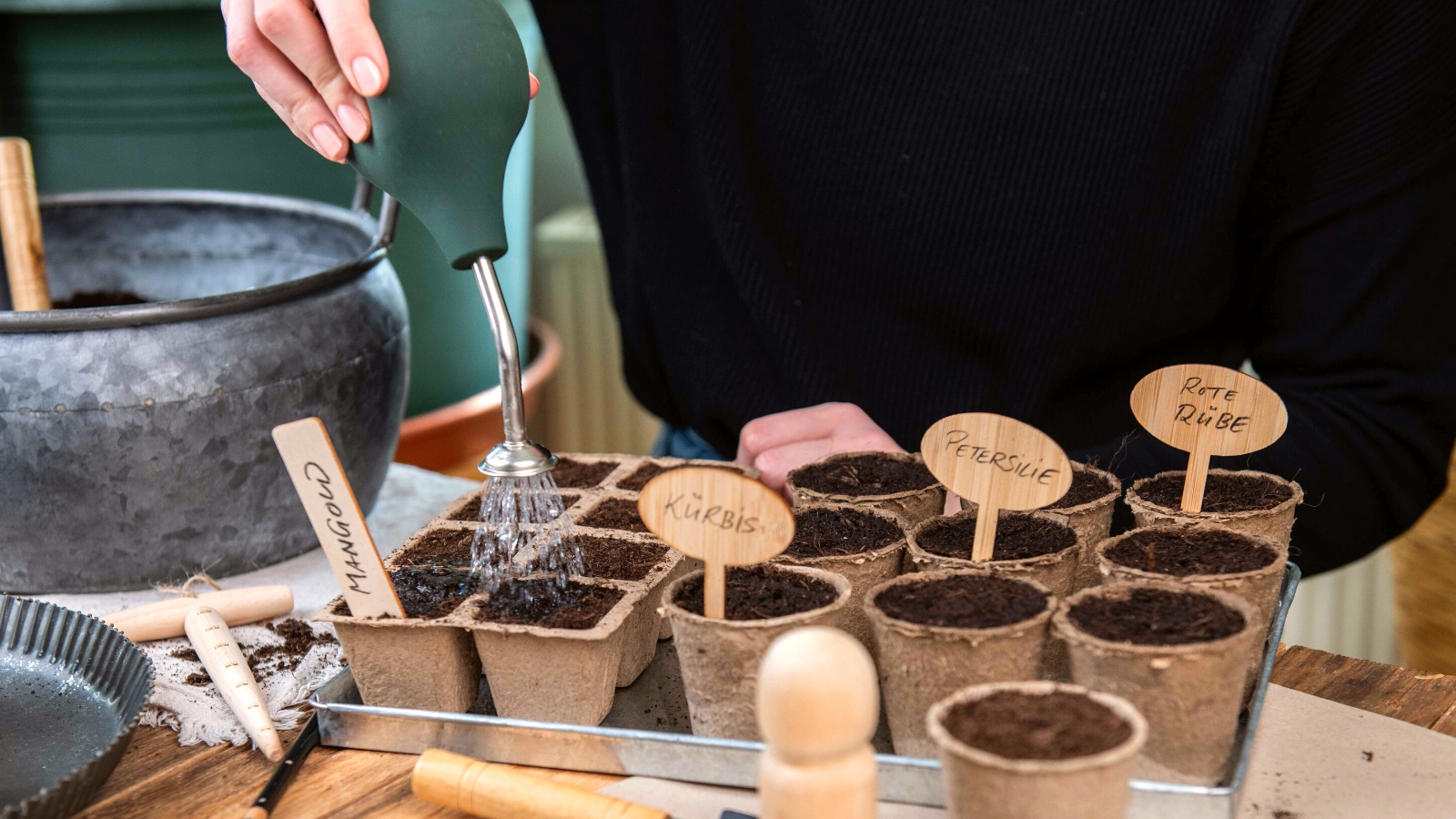
We’re all aware that seeds need consistent moisture to germinate successfully. However, that doesn’t mean they need to be drowning in water or that you need to water on a strict schedule once or twice a day.
Watering daily without considering the current soil moisture levels and environmental conditions is bound to lead to overwatering and dead seedlings before you get a chance to transplant. Seeds do need moisture, but not so much that they are effectively drowning, preventing airflow and encouraging fungal growth.
The solution is to check the soil moisture levels before you water. If the top layer of soil is still moist and the tray is heavy, the seeds have enough water. If the tray is light and the top layer of soil is dry, it’s time to water again. I like to check daily to avoid potential underwatering, but I will only water when the seedlings really need it.
Supplement With Grow Lights Indoors
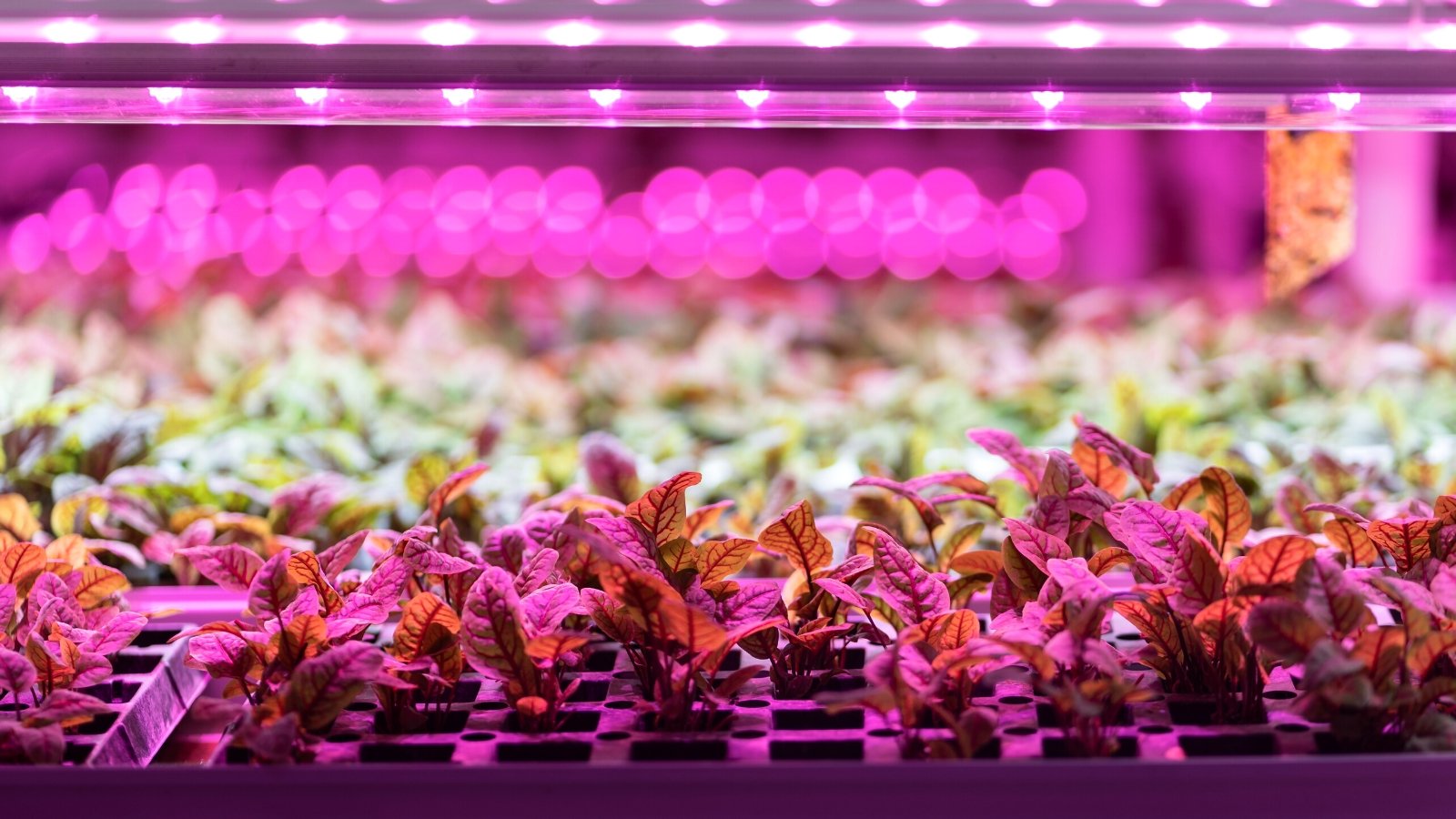
Once your seeds germinate, the right amount of light is essential for strong growth. Unfortunately, if you’re sowing indoors early in the season, the right amount of sunlight can be tough to find. That’s where grow lights come in.
Grow lights replicate the sunlight your seedlings would receive outdoors, providing the ideal environment for growth and preventing any early leggy stems or weak foliage. They can be tailored to the requirements of your specific seedlings, too, although most prefer a full day of sun early on.
Grow lights shouldn’t be kept on all day—just enough to replicate outdoor sunlight conditions. You can adjust the light manually or choose grow lights with automatic timers to simplify the process. Just don’t place the lights too close to the plants, as this may scorch the new growth.
Don’t Be Afraid To Fertilize
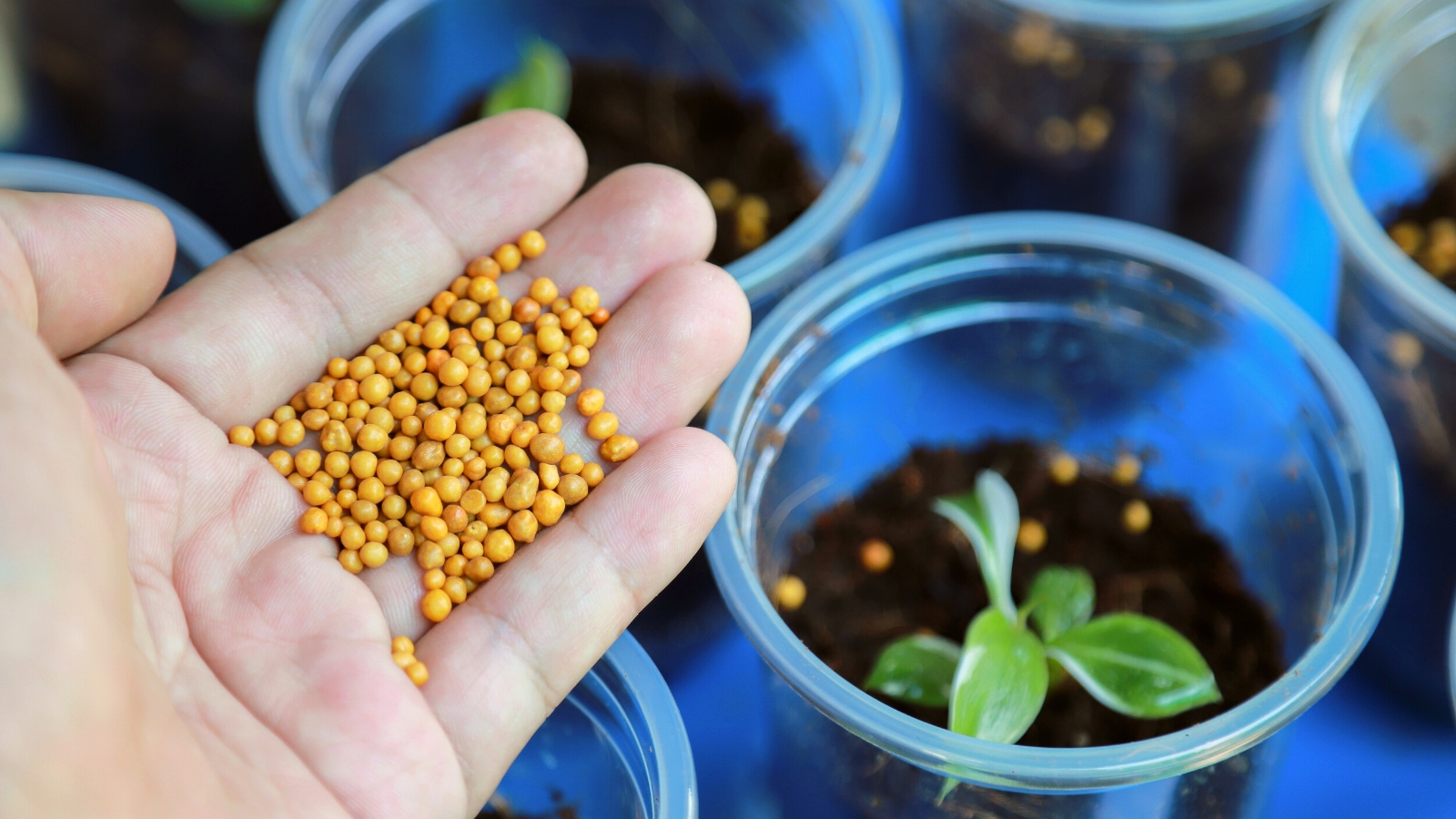
Back to seed-starting myths, many gardeners use a soilless seed-starting mix and avoid feeding their seedlings until they are ready for transplanting. While there is a risk of overfeeding young plants, using the right fertilizer in the right amounts after sowing will actually help plants and deliver stronger growth.
When you see lush, strong seedlings in trays at your local nursery, you may wonder why your plants don’t look as good. Fertilizer is usually the answer. There is no harm in providing a little extra nutrition to boost growth and better prepare your plants for soil conditions when transplanting.
You don’t need to go overboard with the fertilizer, either. A light application of diluted liquid fertilizer every couple of weeks is more than enough to encourage strong growth.
Use A Fan
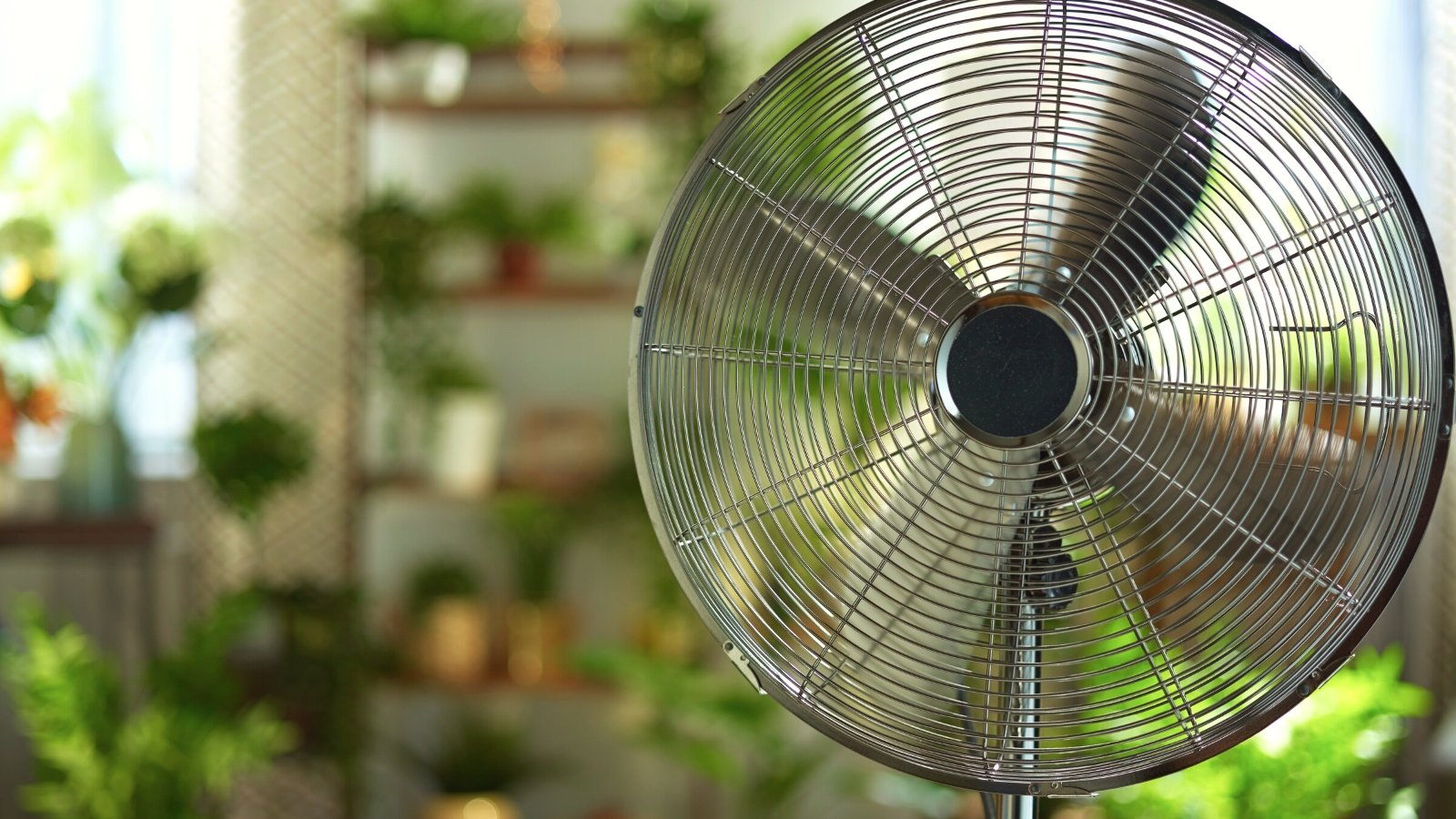
If you’re sowing in trays in a protected environment, like your home or a greenhouse, you have a higher chance of problems with fungal disease due to a lack of airflow. That can be resolved by opening windows or vents in your greenhouse, but if that isn’t an option, a simple fan will do the trick.
A gentle breeze from a fan stops air from stagnating around your plants, which is especially important if you’re sowing thickly in trays or have a lot of seedlings packed closely together. A little extra airflow will discourage fungal disease from settling in and spreading around your plants.
A fan also replicates the breeze your seedlings will encounter when they are moved outdoors. The stems will become stronger to resist movement, ensuring they don’t completely collapse with the slightest breeze after transplanting.
Rotate Your Trays
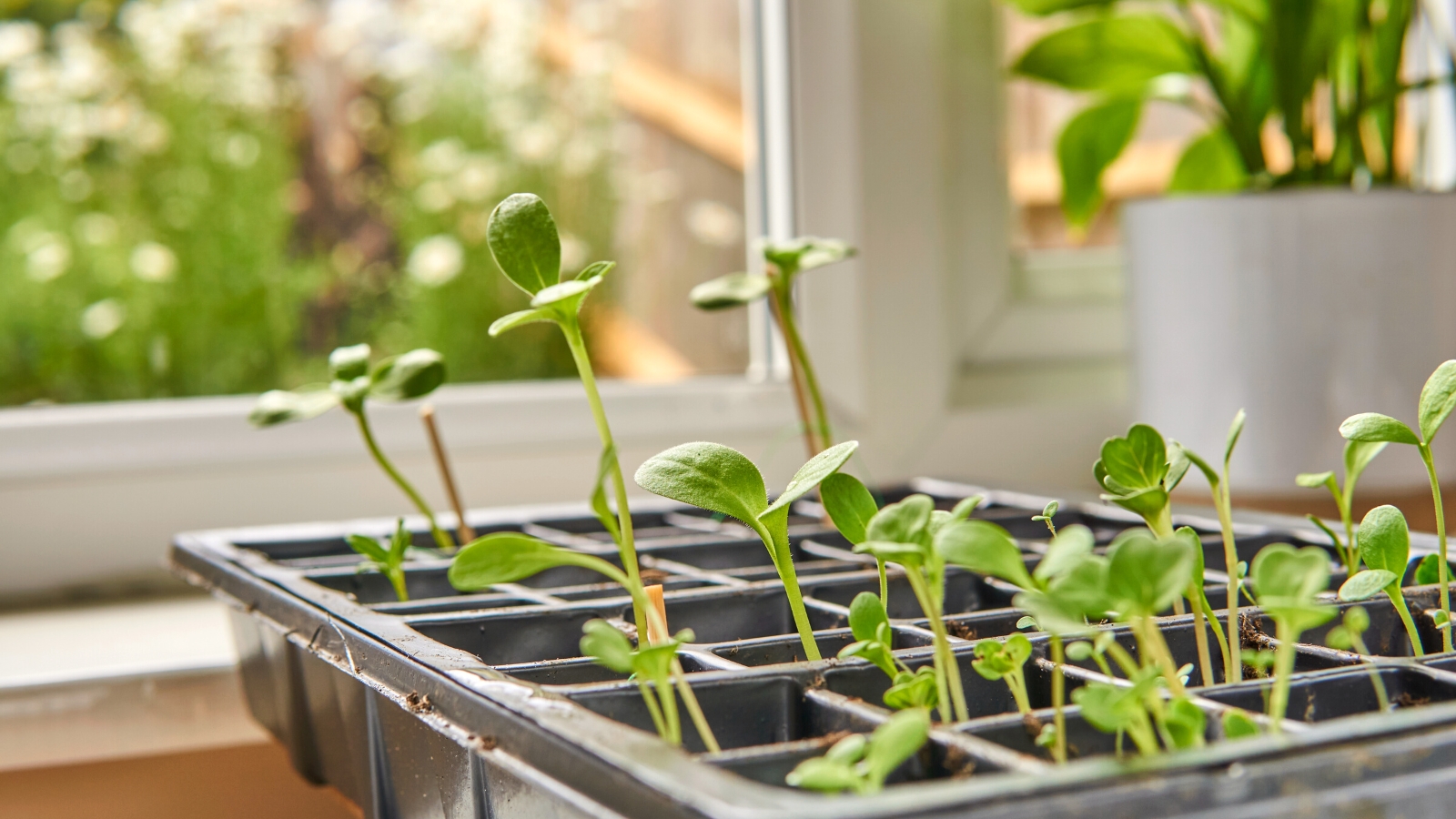
When you’re using grow lights, the light comes directly from above and is evenly distributed. When you’re dealing with sunlight, that isn’t always the case.
Keeping trays in front of a window where the direction of the sunlight is consistently in one direction will cause your seedlings to move toward that light source and become lopsided or even flop over.
Just as you would with houseplants, it’s important to rotate your seed trays every couple of days to ensure the seedlings are getting an equal amount of sunlight from all sides. This will also prevent spotty germination, especially if the sunlight levels are lower than preferred.
Thin Seedlings

As hard as it may be to remove young seedlings, effectively killing them off, thinning is a vital part of the sowing process.
Sowing multiple seeds per cell in your trays, or multiple seeds per hole when direct sowing outdoors, will improve germination rates and ensure you get the strongest plant of all the ones that did emerge. Unfortunately, multiple plants can’t live in the same cell forever. To help one become as strong as possible, you need to thin the weaker ones to make space for new, healthy growth.
Once a few true leaves are visible, remove any underperforming seedlings to leave the healthiest ones behind. What you remove will depend on what you’re growing and how closely they can be sown. Don’t be afraid to sacrifice a few weak plants to secure a stronger harvest.
Harden Off Before Transplanting

The final tip is one impatient gardeners don’t love to hear but remains incredibly important. Before you transplant your seedlings to their final homes, it’s best to give them time to adjust to outdoor conditions, a process called hardening off. Transplanting is already a shock, and adding a drastically different environment on top of that is bound to lead to growth problems.
Start by moving your trays outdoors for about an hour a day, slowly increasing the exposure time over a week or two. This will ensure your plants are ready to handle their new homes when you get to transplanting time.
Final Thoughts
Seed-sowing is an essential skill for gardeners to have. While its not difficult, even for beginners, these tips will boost your seed-sowing success this season.

